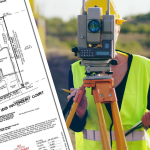When you buy a piece of property, you might think you have complete control over every inch of it. However, certain legal rights — like easements and rights-of-way — can affect how you use your land. Understanding these concepts can help you avoid surprises and protect your property interests.
What is an Easement?
An easement is a legal right that allows someone else to use a portion of your property for a specific purpose. Even though you still own the land, the easement gives another party a limited right to use it in a particular way.
Some common examples of easements include:
- Utility easements: Allow utility companies to install and maintain power lines, water lines, sewer lines, or other public services.
- Access easements: Give a neighbor the right to cross your property to reach a road or another piece of land.
- Drainage easements: Permit water flow across your land to prevent flooding or erosion issues.
What is a Right-of-Way?
A right-of-way is a type of easement that gives someone the legal right to travel across your property. Rights-of-way are most commonly used for roads, driveways, or pathways.
For example, if a neighbor’s property is landlocked (meaning it has no direct access to a public road), a right-of-way easement might allow them to drive across your land to reach the main road. While this may seem like an inconvenience, these arrangements are often necessary to ensure fair and practical access.
Why Should You Care About Easements?
Easements and rights-of-way can significantly affect your property rights, including:
- Limitations on use: You might not be able to build a fence, plant trees, or put up a structure in an easement area.
- Maintenance obligations: In some cases, you may be responsible for maintaining the area, even if others are using it.
- Impact on property value: Easements can affect the marketability of your property and influence a buyer’s decision.
How Are Easements Created?
Easements can be created in a few ways:
- By agreement: A formal agreement between property owners, usually recorded in public records.
- By necessity: When a property is landlocked, a court may grant an easement to provide access.
- By prescription: If someone has been using your land openly and continuously without permission for a certain period (similar to “adverse possession”), they might gain a legal easement.
How to Find Out If a Property Has Easements
Before purchasing a property, it’s crucial to:
- Review the title report and survey: Easements are typically recorded in public records and will show up during a title search. A survey can help you see where these easements are physically located.
- Talk to your title company or attorney: They can explain the details of any existing easements and how they might affect your plans.
Protecting Yourself
If you own or plan to purchase property, knowing about easements and rights-of-way ahead of time can help you avoid conflicts, unexpected costs, and legal disputes down the line. Make sure you fully understand these restrictions before making improvements or changing how you use your land.
We’re Here to Help
At Pioneer Title, we believe knowledge is power when it comes to protecting your property. Our experienced team can help you review and understand easements, rights-of-way, and any other encumbrances on your title — giving you peace of mind as a homeowner or buyer.









